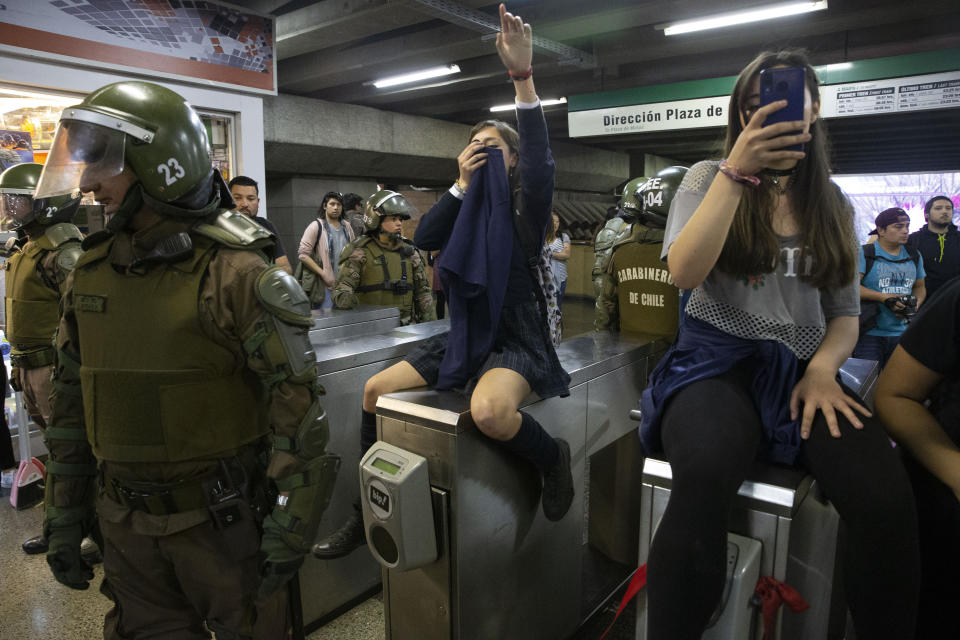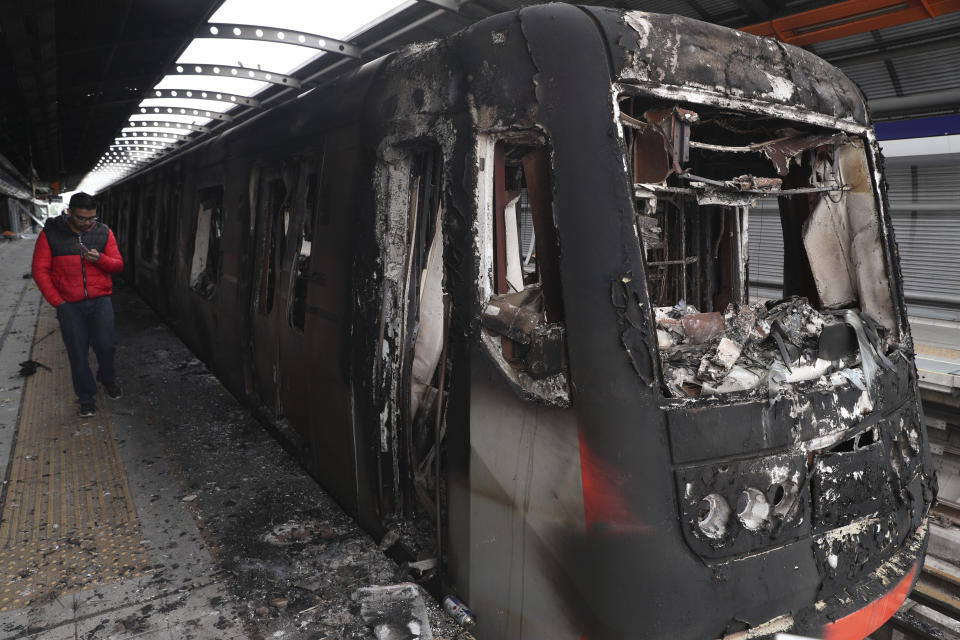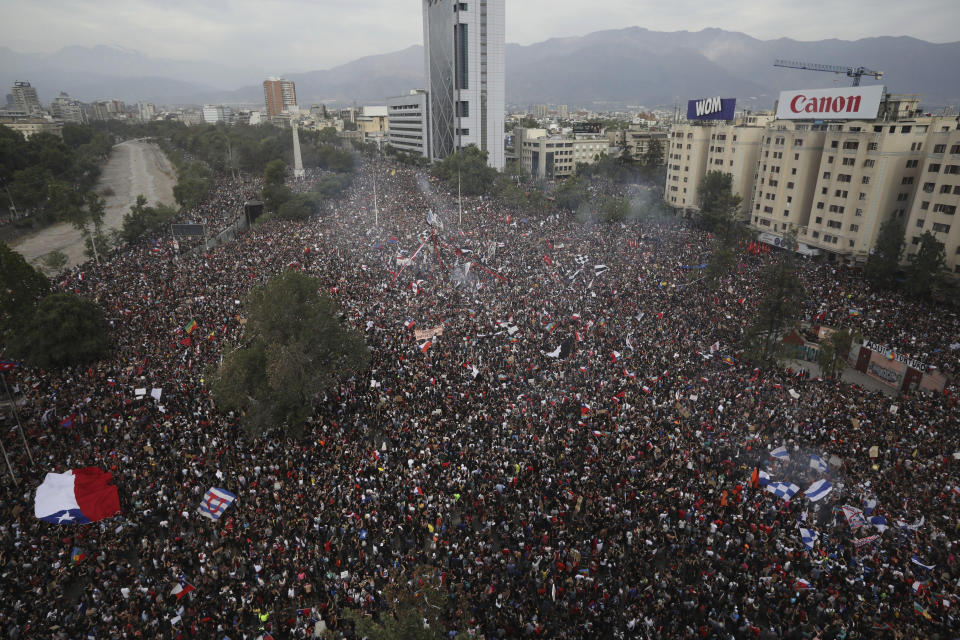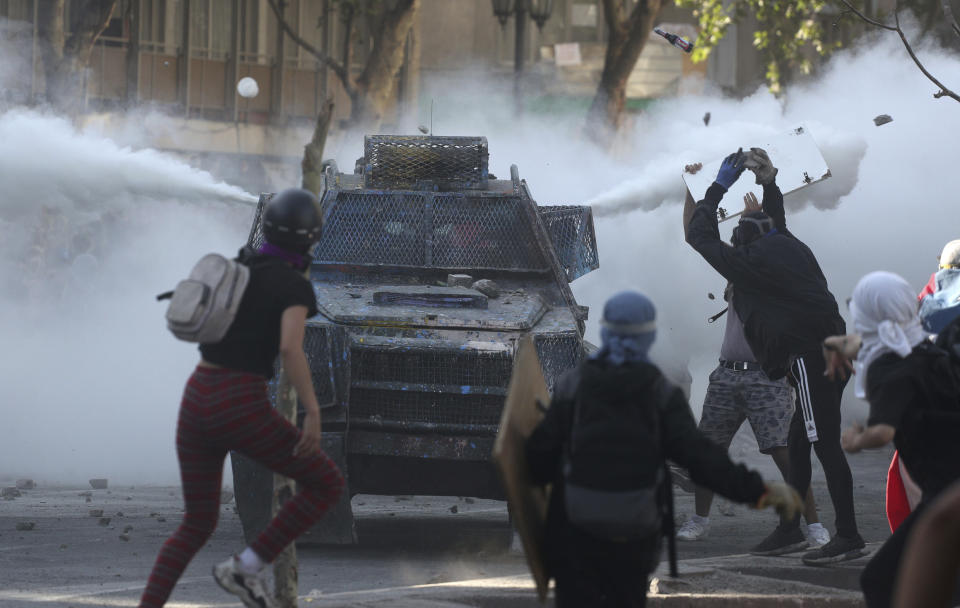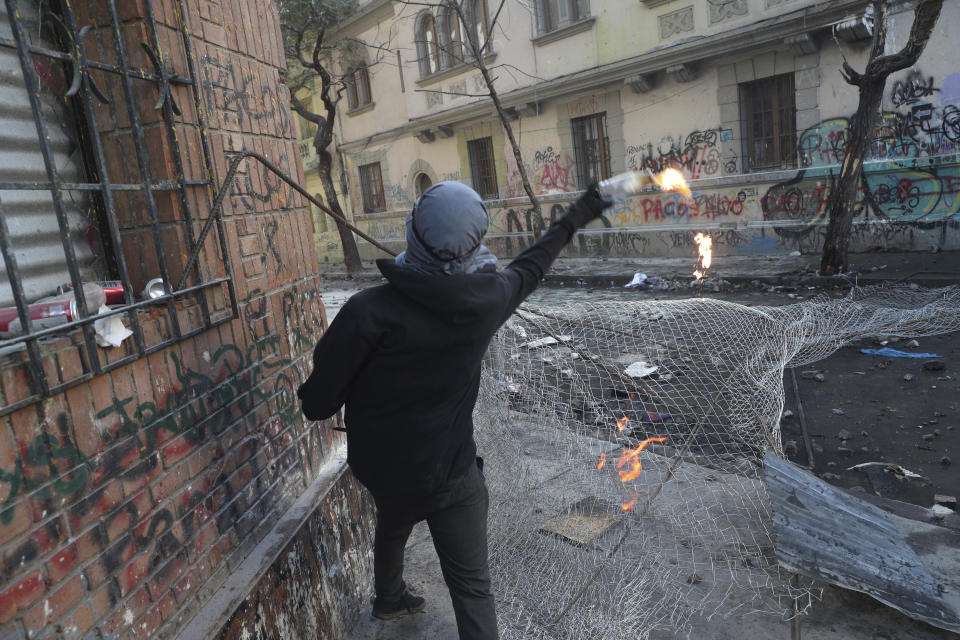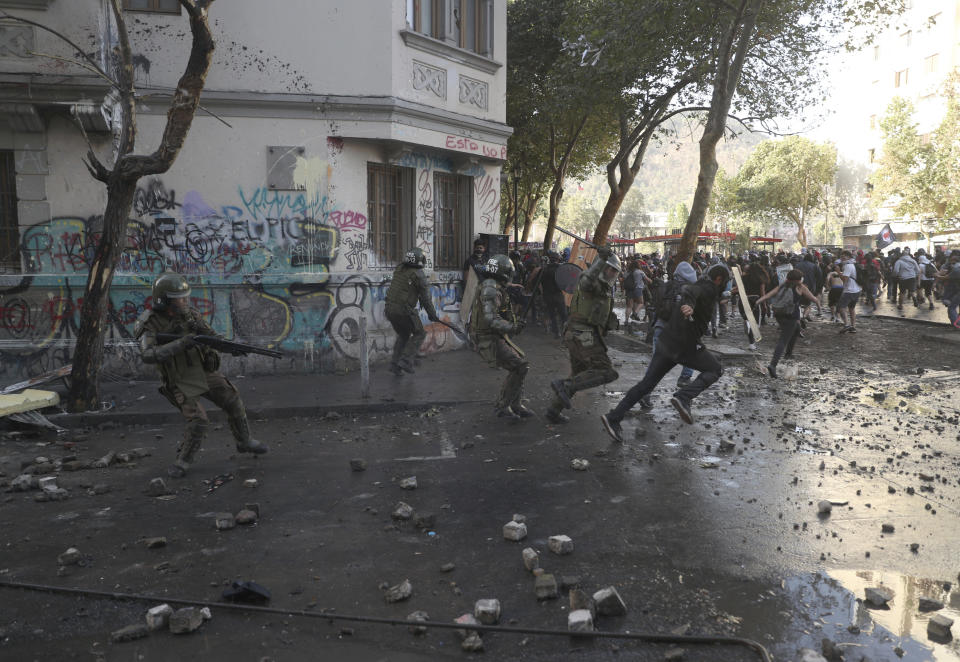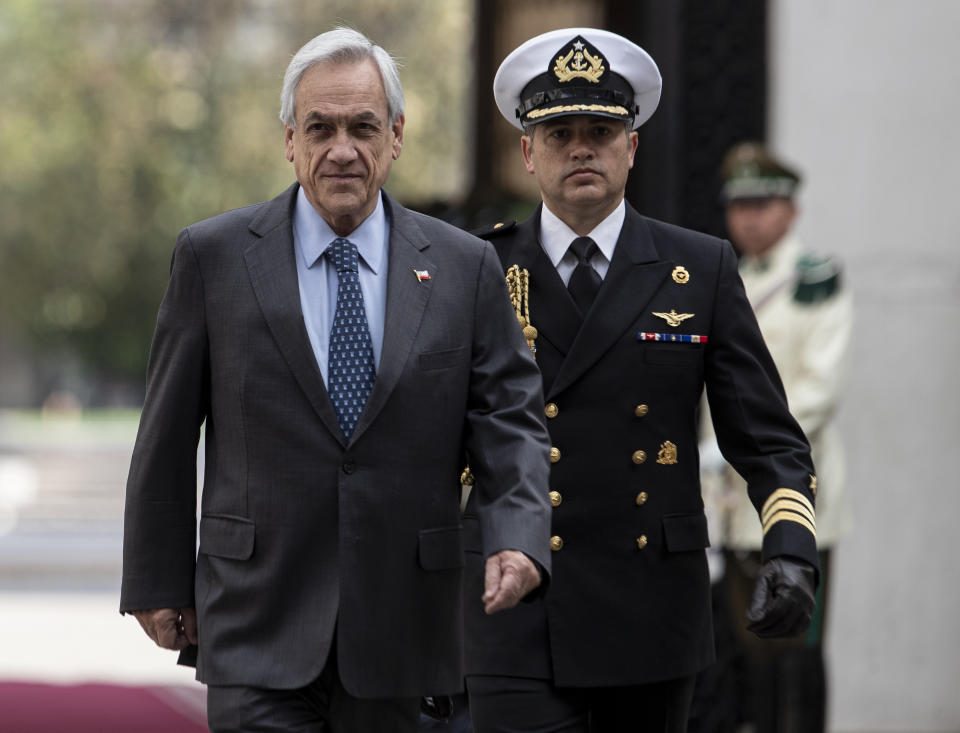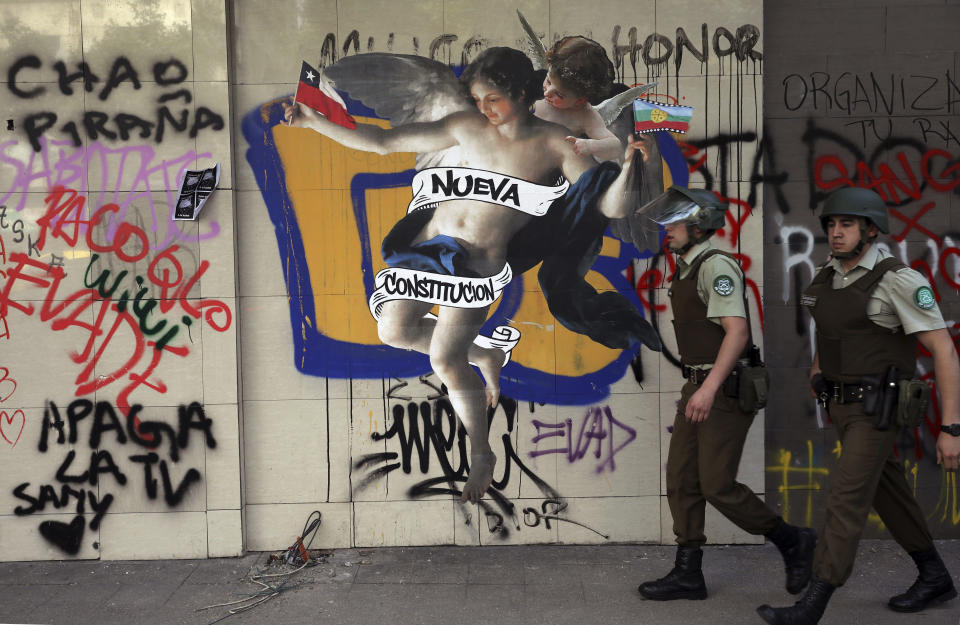AP Explains: How have the protests in Chile evolved?
SANTIAGO, Chile (AP) — It’s been nearly five weeks since the most potent civil unrest in Chile’s recent history broke out, bringing mass protests across the South American nation. Most of the demonstrators are peaceful as they push a broad range of demands intended to bring more equality to their society. But a much smaller group of masked protesters has used street violence, wreaking havoc in many cities. Twenty-six people have died and thousanwwds more have been injured.
___
WHO IS PARTICIPATING IN THE PROTESTS?
The hundreds of thousands of people who have taken part in demonstrations across Chile, but especially in the capital of Santiago, cut across a wide swath of society. They are young and old. Students and professionals. Parents with their children, retirees, working class laborers and salaried employees all make up part of a movement that so far has not had a single leader at its helm.
They carry placards that outline a range of social and economic demands for changing a country that is prosperous yet has one of the region’s widest disparities in income. They wave black flags along with the flags of Chile and of the Mapuche, the country’s biggest indigenous community that has been resisting Spanish colonization for some 300 years.
The most dramatic mobilization came Oct. 25, when an estimated 1.2 million people jammed into central Santiago for a rally on Plaza Italia, which has become a rallying point for the protests. Since then, demonstrations have gradually gone down in size, while the number of masked or hooded protesters who attack buildings and police has gone up. Despite these confrontations, most demonstrators remain peaceful and carry on with a festive atmosphere of singing and whistling.
Sergio González, a psychologist and anthropologist at the University of Santiago de Chile, said that “the hooded protesters are a product of our system ... they have been generated by the exclusion, marginality, and the lack of social sensibility in our economic system.” He said this group numbers between 1,500 and 2,000 people in each city in Chile, and he does not think the police can control them because of insufficient intelligence work.
___
HOW HAS THE STREET UNREST EVOLVED?
When the uprising began Oct. 18, initially with a student protest over a subway fare increase, hundreds of masked vandals smashed most of the subway stations in Santiago and looted grocery stores and pharmacies.
Huge, peaceful protests subsequently flourished. But recently the hooded contingent has displayed greater organization, using shields made of metallic containers that are painted orange and helmets of the same color. They also carry tools to chip out pieces of sidewalk that are thrown at police. Statues of historical figures have also been damaged, along with the exteriors of shops, houses, churches and many institutional buildings. Gasoline bombs have destroyed stores and a few hotels.
In early November, the hooded protesters set their sights on an affluent neighborhood of Santiago, which is home to the city’s tallest building and dozens of restaurants, shops and offices -- but their attacks were repelled by a strong police response. The next day, they took over some of the main streets of a middle-class neighborhood, looting, setting fires and destroying property over several hours.
The vandalism has stretched the length of Chile. In the coastal city of Valparaíso, much of the commerce has been destroyed. Other urban centers have seen institutional and government buildings set on fire, along with residential buildings. In general, shop owners are closing their stores several hours earlier than normal. In cities from north to south, it’s common to see storefronts encased in metal and wooden boards for protection.
Treasury minister Ignacio Briones has predicted that 300,000 people will lose their jobs because of the damage inflicted on stores. Small business owners say 50,000 already have.
___
HOW HAVE AUTHORITIES RESPONDED?
President Sebastián Piñera, a center-right politician, has sought to calm Chileans’ anger by dribbling out a series of modest proposals for social improvements. In addition, he and other political leaders have agreed to hold a plebiscite in April on whether Chile should rewrite its constitution, and who should draft it.
In the streets, police have reacted with force, firing pellet guns at faces of protesters, unleashing tear gas and using water cannons. That response has drawn intense criticism, with human rights groups saying authorities are using a disproportionate level of force against protesters. Piñera early this week acknowledged that abuses have been committed by security forces, and on Tuesday the head of the national police force said it was suspending the broad use of pellet guns that have blinded more than 200 demonstrators in one eye.
___
WHAT HAVE PROTESTERS ACHIEVED?
Four days after protests broke out, Piñera announced a package of measures that would raise by 20% the pension provided to the poorest segment of society (currently, on average, $146 a month), increase the minimum wage of $400 a month by 16%, cancel a 9.2% hike in electricity rates, and reduce the cost of medicine.
The president also has proposed slashing the pay and parliamentary allowance for legislators, which range between $27,000 and $44,000 a month, and he promised to increase taxes on people who earn more than $11,000 a month. The proposals have yet to be approved by the Congress.
Last week, Piñera added a reduction in the cost of public transit for elderly who live in poverty and for university students who have taken out loans to pay for school.
Nearly all of Chile’s political parties have agreed on a roadmap that could lead to the writing of a new constitution, which has also been demanded by demonstrators. Protesters insist the document be drafted by select citizens and not by politicians or people elected with that goal.
___
WHAT OTHER DEMANDS ARE DEMONSTRATORS MAKING?
They are looking for an increase in pensions for the poorest segment of society that is above the poverty line, which in Chile is $217. The government has promised to study the demand.
Protesters also are calling for an end to the two-tier system of education and health care in Chile, which has created one level of service for the poor and another for the rich. And they want to abolish a pension system run by private funds that delivers meager earnings for retirees.
They further demand more social housing and a higher minimum wage.
Richard Estuardo, 26, says Chile’s inequalities justify the violence of the hooded protesters. “We should keep going until a real change is made,” he says.
Ronaldo Riquelme, an 81-year-old retiree who once earned $1,000 a month and now survives on just $300, is equally militant. “I’ll protest until I die,” he says.
___
Associated Press writers Mauricio Cuevas and Marcos Sepúlveda contributed to this report.
